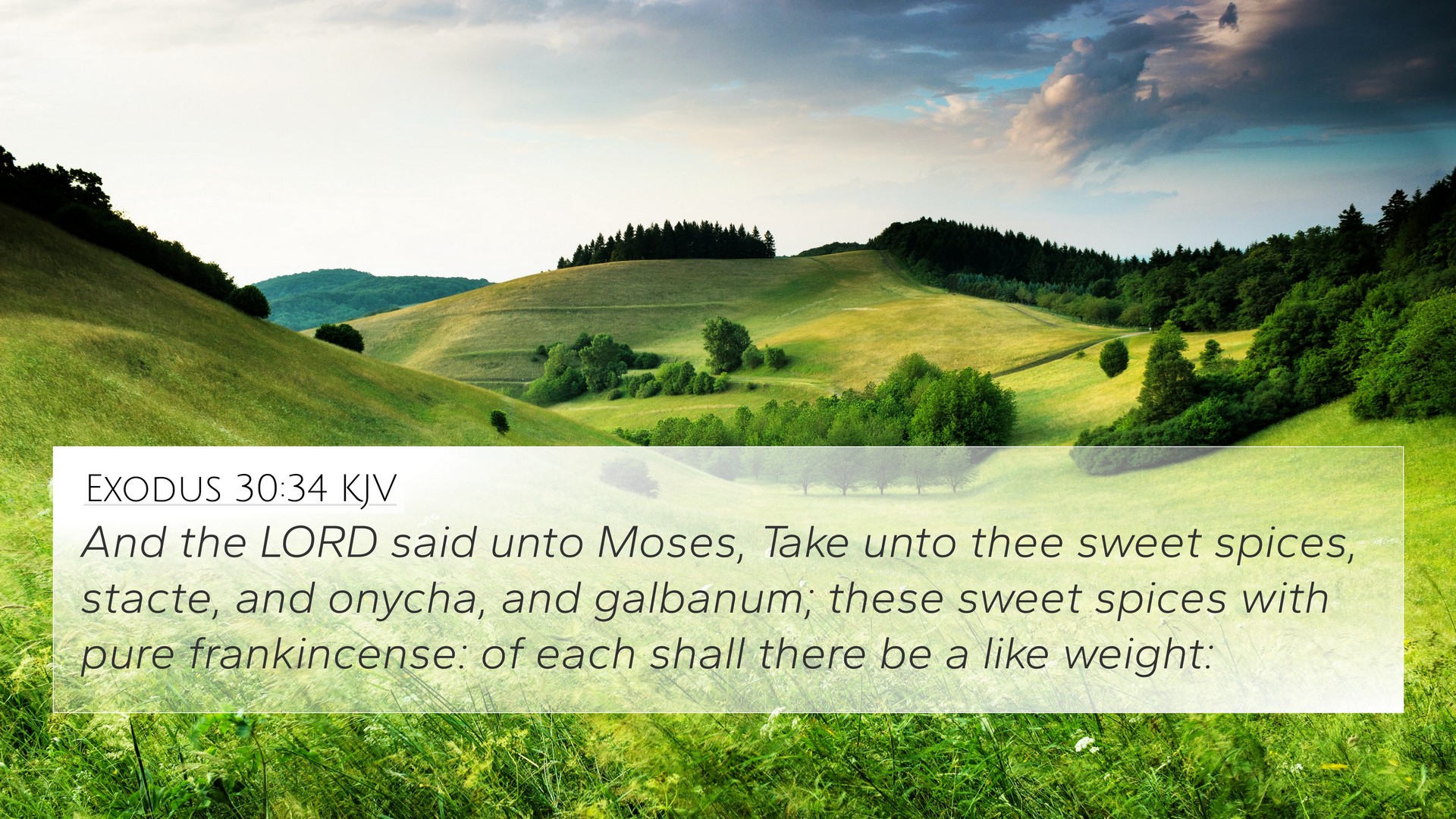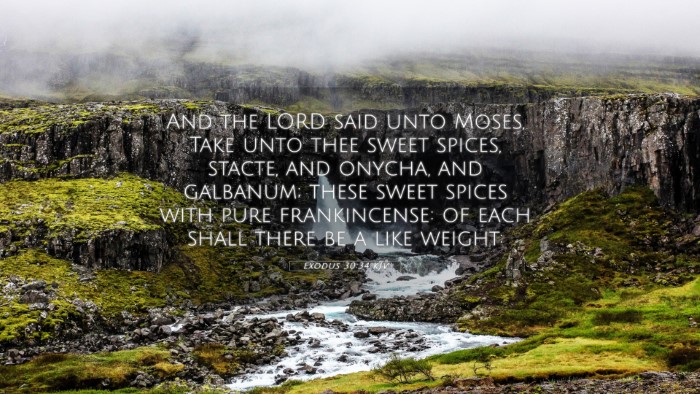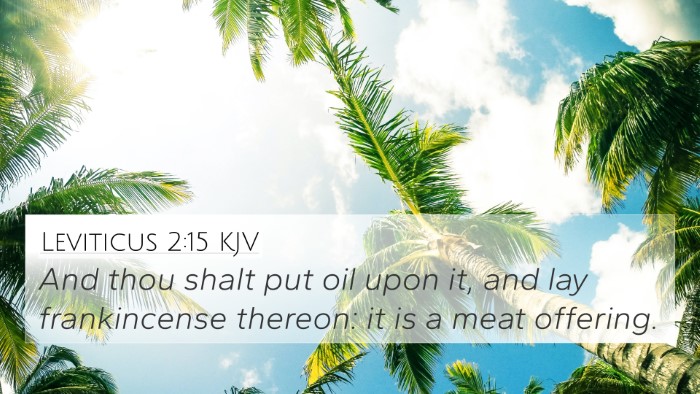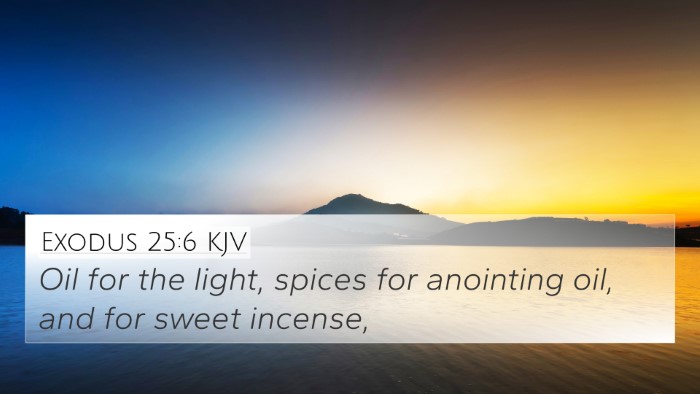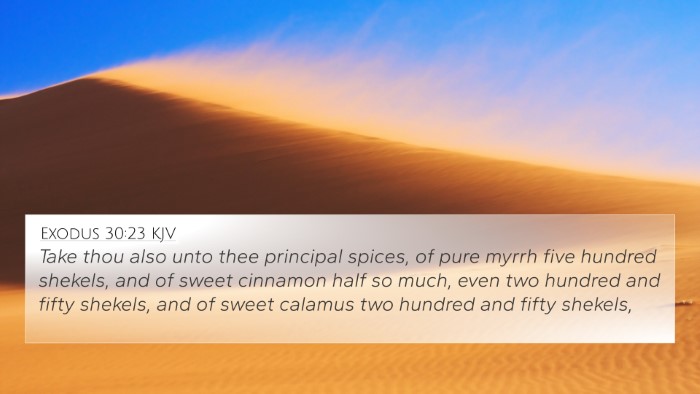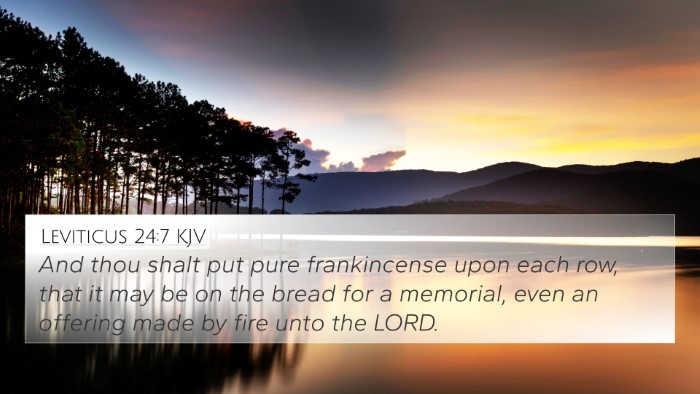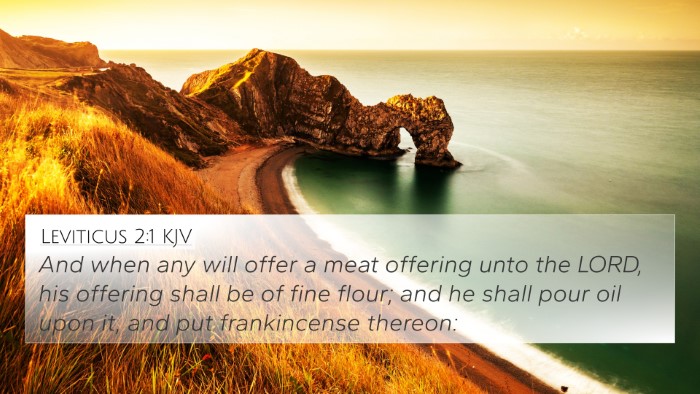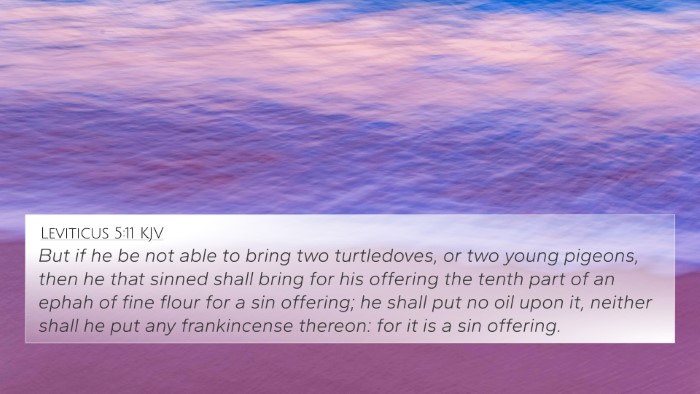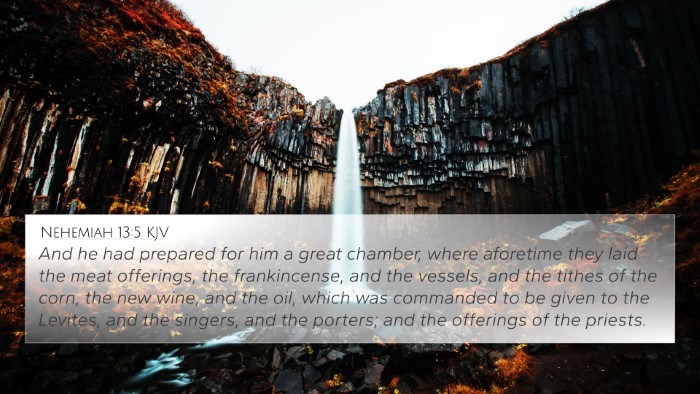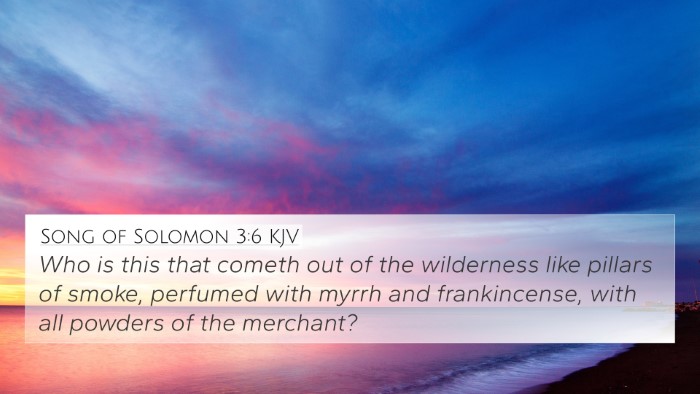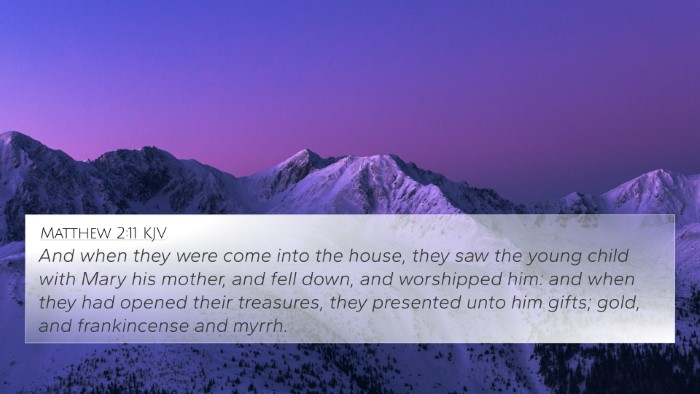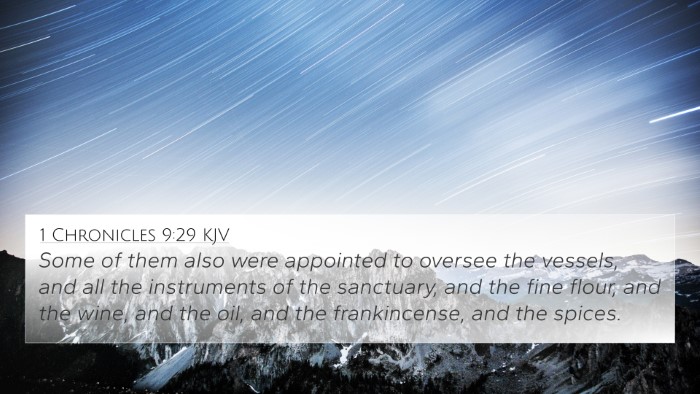Understanding Exodus 30:34
Exodus 30:34 states: "And the LORD said unto Moses, Take unto thee sweet spices, stacte, and onycha, and galbanum; these sweet spices with pure frankincense: of each shall there be a like weight."
Summary of the Verse Meaning
This verse details God's instructions to Moses regarding the ingredients for the holy incense used in temple worship. Each component symbolizes something significant, representing the importance of using pure and fragrant substances in approaching the divine.
Insights from Public Domain Commentaries
-
Matthew Henry's Commentary:
Henry emphasizes the intentionality behind the use of these spices. He notes that the incense served more than just a functional purpose; it was meant to create an environment conducive to worship, paralleling the importance of a pure heart in approaching God.
-
Albert Barnes' Notes:
Barnes explains that the specific spices mentioned were valuable and rare, pointing to the notion that worship should involve our best offerings. The combined scents represent unity and the collective effort in worship, serving as a reminder of the fragrance of our prayers ascending to God.
-
Adam Clarke's Commentary:
Clarke elaborates on the significance of the sweet spices, mentioning their historical usage in religious rituals. He interprets this verse as a directive towards the sanctity and preparation essential for worship, noticing that the method of creation of incense reflects the careful attention God desires in our worship practices.
Connections Between Bible Verses
To gain a deeper understanding of Exodus 30:34, one can explore its connections with various other scripture passages.
- Exodus 25:6: Explains the materials for the tabernacle, establishing the sacredness of the environment where worship takes place.
- Leviticus 16:13: Discusses the role of incense in atonement rituals, highlighting the relationship between incense and God’s mercy.
- Psalm 141:2: Compares prayers to incense, reinforcing the idea that fragrant offerings are symbolic of our prayers rising to God.
- Revelation 5:8: Presents the connection of the prayers of saints as incense before God’s throne, establishing a continuous dialogue between the old and new covenants.
- Romans 12:1: Encourages believers to present themselves as living sacrifices, integrating the theme of sacred service similarly to the incense offerings.
- Hebrews 9:4: Refers to the golden censer and the role of incense in the Holy of Holies, indicating the importance of these practices in the context of the covenant.
- 2 Corinthians 2:15: Suggests that believers are to be a fragrance of Christ, linking personal holiness with the symbolism found in the incense of Exodus.
Thematic Bible Verse Connections
In exploring the themes of holiness, worship, and offerings found in Exodus 30:34, it is useful to consider:
- Worship: The guidelines for worship as outlined in various parts of the Bible, emphasizing holiness and devotion.
- Prayer: The notion that our prayers, much like incense, have a pleasing effect on God.
- Symbolism of Spices: The idea that each ingredient carries significant meaning related to their attributes and uses in the ancient world, drawing parallels to our daily spiritual lives.
How to Use Bible Cross-References Effectively
Utilizing cross-references helps deepen understanding of biblical passages. Here are some tools:
- Bible Concordance: A useful resource for identifying themes and similar verses across the scriptures.
- Bible Cross-Reference Guides: Guides that can help connect verses that discuss similar themes or contexts.
- Online Bible Study Tools: Platforms that facilitate the linking of related scriptures for comprehensive study.
- Study Groups: Engaging in discussions with others can uncover diverse interpretations and connections.
Conclusion
Exodus 30:34 invites us to reflect not only on the materials used for sacred worship but also on the deeper meanings of our offerings to God. Through cross-referencing related passages, believers can uncover a rich tapestry of biblical themes that resonate from the Old to the New Testament, reinforcing the continuity and the significance of worship throughout Scripture.
